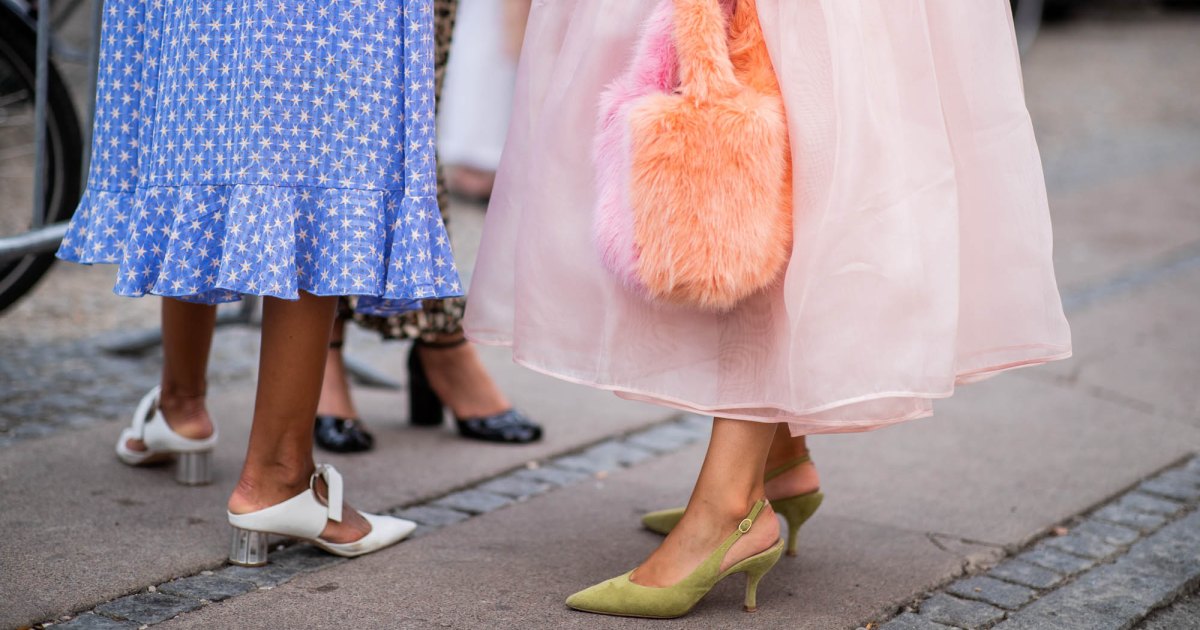Culture
Josephine Baker, Still Moving – The New York Times

There was no shortage of epithets for Josephine Baker, the St. Louis-born polymath who took Paris by storm when she arrived there in 1925, aged 19, to headline “La Revue Nègre,” a show of all-Black performers at the Théâtre des Champs-Élysées.
The French graphic designer Paul Colin said he’d never seen anyone move like her: “Part kangaroo, part prizefighter. A woman made of rubber, a female Tarzan.” To the writer Colette, a rumored lover, she was “a most beautiful panther,” and to Ernest Hemingway, “the most sensational woman anyone ever saw.” Over the next decade, she was also called “Black Venus,” “Black Pearl” and “Creole Goddess.”
It is the Baker of this era — doing her scantily clad “danse sauvage” — who still looms large in the cultural imagination. She was an Art Deco icon who was inducted into France’s Panthéon in 2021 and honored by Beyoncé on her recent “Renaissance” tour. A new exhibition at the Neue Nationalgalerie in Berlin presents Baker in the round — not as an object of entertainment, but as an artist and an activist.
The show, “Josephine Baker: Icon in Motion,” which runs through April 28, is a small but dense and deeply imaginative reconsidering of her life and work. The museum’s director, Klaus Biesenbach (formerly of MoMA and the Los Angeles County Museum of Art) has curated the show with the artist Kandis Williams, the scholar Terri Francis and the curator Mona Horncastle: The result emphasizes the importance of multiple interpretations.
We see familiar images, still and moving, of Baker during her Paris heyday, wearing anklets of feathers, elaborate vests made of crystals and pearls, bikinis festooned with hornlike protrusions and, of course, the infamous skirt of jewel-encrusted bananas that bounced and twinkled when she danced the Charleston. Black-and-white glamour photographs by prominent 1920s photographers show Baker’s influence on high fashion of the time.
On a series of monitors, segments from her dance routines and feature films show Baker’s extraordinary physical skill. In one, every part of her body seems to move independently, arms and legs akimbo, while also keeping time to the same beat. In another, she sashays and wriggles across the stage like mercury, then breaks into knee drops so extreme that I felt my own legs go weak. In yet another, she clowns between moves, rolls and crosses her eyes, purses her lips, puffs up her cheeks and waddles, wiggling her head side-to-side.
A section called “Modernist Muse” shows Baker’s creative impact on prominent artists of the time, many of whom were her friends (and sometimes paramours). Alexander Calder’s 1928 mobile “Josephine Baker IV” has her sparely outlined in steel wire, with sinuous curves and protruding coils for breasts. A drawing by Le Corbusier from around the same time, “Josephine Baker Sleeping,” shows the notoriously unstoppable dancer in gentle repose. At the center of the display, the curators have placed a vitrine filled with books about Baker, including her memoirs, which were translated into many languages. She might have been a muse, but she was also — literally — the author of her own life.
Baker lived and worked across a Europe shaped by its colonial exploits and was keenly aware of how she could embody the racist ideas of her audience. “People have done me the honor of comparing me to an animal,” Baker once said slyly of comments like those from Colin or Collette.
She used hackneyed colonial symbols, like bananas, palm trees and tropical creatures, to her own ends, and her pet cheetah Chiquita sometimes terrorized the orchestra pit. Her performances were self-aware appropriations, played for laughs with absolute sincerity: See how I move, see how I grin, see how stereotype and desire are entwined. See how you can’t look away.
Then fascism’s rise brought down the curtain. On tour in Austria in the early 1930s, churches rang their bells to drown out her performances, and once France was occupied in 1940, she was banned from the stage there, along with all Black and Jewish performers. Undaunted, she joined the French Resistance and collected intelligence while performing in North Africa, smuggling back information written in invisible ink on her score sheets.
In 1961, she was awarded the Croix de Guerre, a French military honor for feats of bravery; two years later she traveled back to the United States to attend the March on Washington, where she was one of two women to speak alongside Martin Luther King Jr.
“I was a devil in other countries, and I was a little devil in America too,” Baker said to the crowd of over 200,000 people on the National Mall. In her country of birth, she was a “little devil” for her commitment to speaking out about racial segregation. A display titled “Civil Rights Activist Extraordinaire” shows photographs of Baker on the National Mall, and meeting with the National Association for the Advancement of Coloured People, which inaugurated a day in her honor. Baker’s belief in equality and universalism extended to her personal life: She adopted 12 children of various ethnicities and nationalities, calling them her “Rainbow Tribe.”
Artists and scholars remain influenced by Baker and what Francis, the co-curator, describes in a video essay that appears in the show as the performer’s “prismatic” qualities: “Neither a single image nor a static representation, Baker is rather a dazzling many-ness, a structure of spectacles, formed from multiple media.”
Also included are works by contemporary artists that speak to Baker’s inspiration — like Carrie Mae Weems’s “Slow Fade To Black: Josephine Baker” a diptych, that frames the exhibitions entrance, or Jean-Ulrick Désert’s colorful stained glass portrait, “Shrine of the Divine Negress No. 1” at the exit. Where Weems blurs two iconic photographs of Baker to the point of dissolution, Désert renders the performer in vibrant clarity, surrounded by butterflies. Most powerful and provocative is Simone Leigh’s “Slipcover” (2022-3), a wall-mounted square of porcelain bananas painted in fleshy hues from pale pink to dark black, with one errant bright blue at the bottom right corner. Leigh harnesses the same stereotypes Baker was exploring — and exploiting — in her art to make audiences think twice, look again.
In this sensitive presentation, Baker emerges as a many-pointed star, at once individual and part of a wider constellation. With its collaborative curatorial team, array of mediums and inclusion of contemporary artists, the exhibition is also a collective enterprise of reinterpretation, in which the networks between discrete objects and images are just as important.
Baker never stopped moving: onstage, onscreen, across Europe. In this exhibition, it is her identity that refuses to stay still and insists on containing multitudes.
Josephine Baker: Icon in Motion
Through April 28 at the Neue Nationalgalerie in Berlin; smb.museum.





















